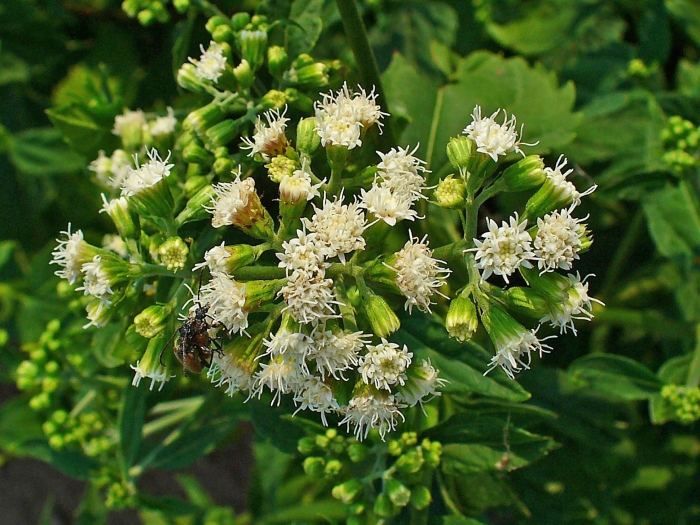White Snakeroot
(Ageratina altissima)
White Snakeroot (Ageratina altissima)
/
/

H. Zell
CC BY-SA 3.0




























































Estimated Native Range
Summary
White Snakeroot is valued for its ease of maintenance and its ability to provide late-season blooms when many other plants have finished flowering. It is often used in naturalized plantings, woodland gardens, and shaded borders. While it prefers moist soils, it is relatively adaptable and can tolerate full sun to part shade, with varying water requirements. Gardeners should be aware that Ageratina altissima contains tremetol, a toxin that can be harmful to livestock if ingested. Additionally, it is potentially invasive outside its native range, so caution should be exercised when planting it in non-native areas.CC BY-SA 4.0
Plant Description
- Plant Type: Herb
- Height: 3-5 feet
- Width: 2-4 feet
- Growth Rate: Moderate
- Flower Color: White
- Flowering Season: Fall
- Leaf Retention: Deciduous
Growth Requirements
- Sun: Full Sun, Part Shade
- Water: Medium
- Drainage: Slow, Medium, Fast
Common Uses
Bee Garden, Bird Garden, Border Plant, Butterfly Garden, Deer Resistant, Drought Tolerant, Erosion Control, Fragrant, Showy Flowers
Natural Habitat
Understory of deciduous forests, often in rich, moist soils along streams and in woodland clearings
Other Names
Common Names: White Sanicle, Richweed, Weiße Natternwurz, Eupatoire À Feuilles Molles, Eupatoire Rugueuse, Rostflockel, 서양등골나물, Tall Eupatorium
Scientific Names: , Eupatorium rugosum, Ageratina altissima, Eupatorium urticaefolium, Eupatorium ageratoides, Ageratum altissimum, Ageratina ageratoides, Eupatorium rugosum var. chlorolepis, Eupatorium rugosum var. tomentellum, Eupatorium rugosum var. villicaule
GBIF Accepted Name: Ageratina altissima (L.) R.King & H.Rob.